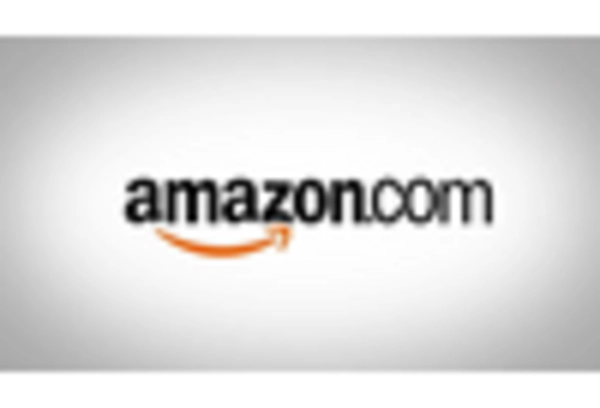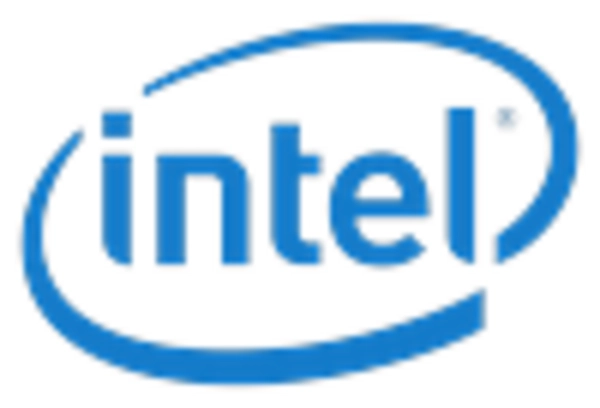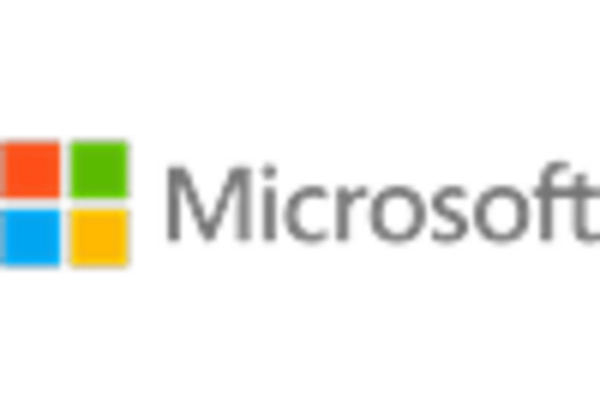Increased Focus on Data Security
As the pervasive computing-technology market in Europe expands, the focus on data security is becoming increasingly critical. With the proliferation of connected devices, concerns regarding data privacy and security breaches are at the forefront of consumer and regulatory attention. The European Union's General Data Protection Regulation (GDPR) has set stringent guidelines for data handling, compelling companies to prioritize security measures in their products. This regulatory environment is likely to drive investments in secure computing technologies, as businesses strive to comply with legal requirements while maintaining consumer trust. Consequently, the emphasis on data security is expected to shape the development of pervasive computing solutions, ensuring that they are not only innovative but also secure.
Integration of Artificial Intelligence
The integration of artificial intelligence (AI) into pervasive computing technologies is emerging as a key driver in Europe. AI enhances the functionality of devices by enabling them to learn from user behavior and adapt accordingly. This capability is particularly valuable in sectors such as healthcare, where AI-driven applications can monitor patient conditions in real-time, thereby improving outcomes. The European AI market is expected to grow to €100 billion by 2025, which will likely bolster the pervasive computing-technology market as AI becomes a standard feature in smart devices. Furthermore, the synergy between AI and pervasive computing technologies is anticipated to foster innovation, leading to the development of more sophisticated applications that cater to diverse consumer needs.
Growing Demand for Smart Home Solutions
the pervasive computing-technology market in Europe is influenced by the growing demand for smart home solutions.. As consumers increasingly seek convenience and energy efficiency, the adoption of smart devices such as thermostats, security systems, and lighting controls is on the rise. Recent studies indicate that the smart home market in Europe is projected to reach €30 billion by 2026, reflecting a compound annual growth rate (CAGR) of approximately 25%. This trend is driving manufacturers to innovate and integrate advanced computing technologies into their products, thereby expanding the pervasive computing-technology market. Additionally, the increasing awareness of energy conservation and sustainability is prompting consumers to invest in smart home technologies that optimize resource usage.
Rising Adoption of Wearable Technologies
the pervasive computing-technology market in Europe is witnessing a rise in adoption of wearable technologies.. Devices such as smartwatches and fitness trackers are becoming increasingly popular among consumers, driven by a growing interest in health and wellness. The wearable technology market in Europe is projected to reach €20 billion by 2025, indicating a robust growth trajectory. This trend is encouraging manufacturers to integrate advanced computing capabilities into wearables, thereby enhancing their functionality and appeal. Moreover, the integration of health monitoring features in wearables is likely to contribute to the expansion of the pervasive computing-technology market, as consumers seek devices that provide real-time health insights and promote healthier lifestyles.
Advancements in Connectivity Technologies
the pervasive computing-technology market in Europe is experiencing a surge due to advancements in connectivity.. Innovations such as 5G and Wi-Fi 6 are enhancing the speed and reliability of data transmission, which is crucial for the seamless operation of IoT devices. As of 2025, it is estimated that 5G networks will cover over 70% of the European population, facilitating the deployment of smart applications across various sectors. This increased connectivity is likely to drive demand for pervasive computing solutions, as businesses seek to leverage real-time data for improved decision-making. Furthermore, the integration of edge computing with these connectivity advancements is expected to reduce latency, thereby enhancing user experiences and operational efficiencies in the pervasive computing-technology market.


















Leave a Comment